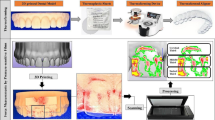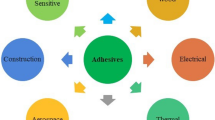The purpose of the present study was to investigate two and three-body wear resistance and hardness of eighth kinds of modern bulk-fill and resin-based composite materials — Grandio, Estelite Flow, Filtek bulk-fill, Charisma, Clearfil, Ultimate, Quadrant, and G-aenial. All samples were kept in distilled water for one week, and their Vickers hardness was determined before two- and three-body wear tests. The mean volume loss of all specimens after the wear tests was determined by the 3D profilometry. In addition, a random specimen was selected from each test group and scanning electron microscope images were taken for an analysis of wear tracks. The surface morphology of the Clearfil and Ultimate composite materials was damaged severely, whereas Grandio and Charisma had a very smooth surface after two-body wear tests. The lowest mean volume loss was measured in micro-fill Grandio two-body and three-body wear tests. The Filtek bulk-fill and resinbased composites showed similar two- and three-body wear behavior. For the composite materials considered, correlations between the filler volume loss, Vickers hardness, and two- and three-body wear resistances were found to be insignificant.





Similar content being viewed by others
References
F. Engelhardt et al., “Comparison of flowable bulk-fill and flowable resin-based composites: an in vitro analysis,” Clin. Oral Investig., 20, No. 8, 2123-2130 (2016).
N. Ilie and K. Stark, “Curing behaviour of high-viscosity bulk-fill composites,” J. of Dentistry, 42, No. 8, 977-985 (2014).
S. Bucuta and N. Ilie, “Light transmittance and micro-mechanical properties of bulk fill vs. conventional resin based composites,” Clin. Oral Investig., 18, N. 8, 1991-2000 (2014).
U. Lohbauer et al., “The effect of different light-curing units on fatigue behavior and degree of conversion of a resin composite,” Dental Mater., 21, No. 7, 608-615 (2005).
N. Koottathape et al., Quantitative wear and wear damage analysis of composite resins in vitro,” J. Mech. Behav. Biomed. Mater., 29, 508-516 (2014).
G. J. Christensen, “Remaining challenges with Class II resin-based composite restorations,” J. Am. Dental Assoc., 138, No. 11, 1487-1489 (2007).
D. Lazaridou et al., “Are resin composites suitable replacements for amalgam? A study of two-body wear,” Clin. Oral Investig., 19, No. 6, 1485-1492 (2015).
L. H. Mair et al., “Wear: Mechanisms, manifestations and measurement. Report of a workshop,” J. Dentistry, 24, Nos. 1-2, 141-148 (1996).
S. K. Kim et al., “A study of the effects of chewing patterns on occlusal wear,” J. Oral Rehabilit., 28. No. 11, 1048-1055 (2001).
S. Hahnel et al., “Two-body wear of dental restorative materials,” J. Mech. Behav. Biomed. Mater., 4, No. 3, 237-244 (2011).
J. L. Ferracane, “Hygroscopic and hydrolytic effects in dental polymer networks,” Dental Mater., 22, No. 3, 211-222 (2006).
C. Mehl et al., “Wear of composite resin veneering materials and enamel in a chewing simulator,” Dental Mater, 23, No. 11, 1382-1389 (2007).
M. Rosentritt et al., “Influence of stress simulation parameters on the fracture strength of all-ceramic fixed-partial dentures,” Dental Mater., 22, No. 2, 176-182 (2006).
J. C. M. Souza et al., “Abrasive and sliding wear of resin composites for dental restorations,” Tribology Int., 102, 154-160 (2016).
X. Hu, P.M. Marquis, and A.C. Shortall, “Influence of filler loading on the two-body wear of a dental composite,” J. Oral Rehabilit., 30, No. 7, 729-737 (2003).
L. A. Knobloch et al., “Two-body wear resistance and degree of conversion of laboratory-processed composite materials,” Int. J. Prosthodontics, 12. No. 5, 432-438 (1999).
N. Koottathape et al., “Two- and three-body wear of composite resins,” Dental Mater., 28, No. 12, 1261-1270 (2012).
N. Finlay et al., “The in vitro wear behavior of experimental resin-based composites derived from a commercial formulation,” Dental Mater., 29, No. 4, 365-374 (2013).
S. Lauvahutanon et al., “In vitro evaluation of the wear resistance of composite resin blocks for CAD/CAM,” Dental Mater. J., 34, No. 4, 495-502 (2015).
S. D. Heintze, “How to qualify and validate wear simulation devices and methods,” Dental Mater., 22, No. 8, 712-734 (2006).
X. Hu, A. C. Shortall, and P. M. Marquis, “Wear of three dental composites under different testing conditions,” J. Oral Rehabilit., 29, No. 8, 756-764 (2002).
A. U. J. Yap, S. H. Teoh, and K. B. Tan, “Influence of water exposure on three-body wear of composite restoratives,” J. Biomed. Mater. Res., 53, No. 5, 547-553 (2000).
E. Yilmaz and R. Sadeler, “Effect of thermal cycling and microhardness on roughness of composite restorative materials,” J. of Restorative Dentistry, 4, No. 3, 93-96 (2016).
R. G. Chadwick et al., The effect of storage media upon the surface microhardness and abrasion resistance of 3 composites,” Dental Mater., 6, No. 2, 123-128 (1990).
P. Pieters et al., “Water uptake of a silorane-based composite used in restorative dentistry,” Mech. Compos. Mater., 50, No. 3, 395-402 (2014).
W. J. Obrien and J. Yee, “Microstructure of posterior restorations of composite resin after clinical wear,” Operative Dentistry, 5, No. 3, 90-94 (1980).
K. D. Jorgensen, “Restorative resins – abrasion vs. mechanical-properties,” Scandinav. J. Dental Res., 88, No. 6, 557-568 (1980).
J. R. Condon and J. L. Ferracane, “In vitro wear of composite with varied cure, filler level, and filler treatment,” J. Dental Res., 76, No. 7, 1405-1411 (1997).
Author information
Authors and Affiliations
Corresponding author
Additional information
Russian translation published in Mekhanika Kompozitnykh Materialov, Vol. 54, No. 3, pp. 575-588, May-June, 2018.
Rights and permissions
About this article
Cite this article
Yilmaz, E.Ç., Sadeler, R. Investigation of Two- and Three-Body Wear Resistance on Flowable Bulk-Fill and Resin-Based Composites. Mech Compos Mater 54, 395–402 (2018). https://doi.org/10.1007/s11029-018-9750-8
Received:
Revised:
Published:
Issue Date:
DOI: https://doi.org/10.1007/s11029-018-9750-8




